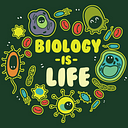A look into synthetic biology
Biology student Steven Rindner continues to explore science and its capabilities to alter biological processes. One of these is called ‘synthetic biology,’ which is about redesigning organisms with the help of engineering principles. It is quite promising, but there are questions on whether or not it can be abused. To know more about this, here’s a quick look into this new field of science.
What is synthetic biology?
By the very word ‘synthetic’ one gets the idea that something is essentially being fabricated for some useful aim. Steven Rindner agrees that synthetic biology is exactly like this. Its main goal is to create new biological tools and systems, or to redesign systems that nature already has. It encompasses biotechnology, genetic engineering, molecular biology, molecular engineering, systems biology, biophysics, and so much more. It combines DNA chemical synthesis with genomics that hopes to ease the work of researchers in manufacturing catalogued DNA sequences that will be assembled into new genomes.
Breakthroughs
In the’70s and ’80s, genetic engineering were used for environmental purposes, particularly in ‘bioremediation,’ says Steven Rindner. This developed a bacterium that is able to digest petroleum components, which can be used to clean up oil spills. In 2010, scientists at the J. Craig Venter Institute (JCVI) announced the world’s first synthetic life form that was fabricated from three chemical laboratories. Scientists wrote four ‘watermarks’ into the DNA of the single-cell organism to identify it as synthetic.
Ethical and social implication
The ability to manipulate cells and organisms raises alarm bells, says Steven Rindner. In 2002, some US scientists were able to synthesize a viral genome for the first time. Viral genomes are much smaller than bacteria. Scientists then revealed that a polio virus can be developed from scratch. This made people question if synthetic biology will be used to develop biological weapons, instead of using it to benefit humanity.
